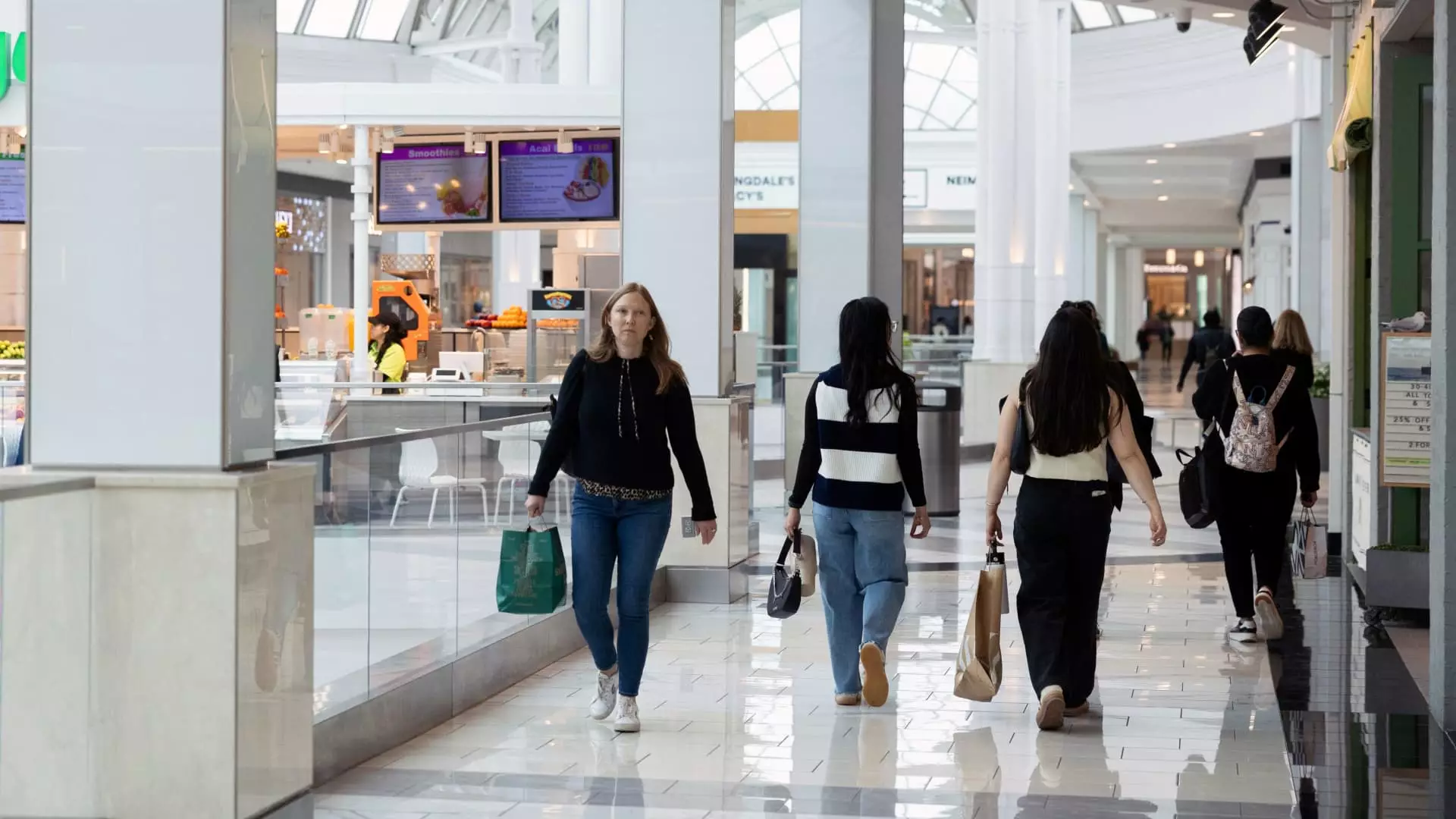As we usher in a new era for the American economy in 2025, one truth stands glaringly apparent: America is witnessing a profound division among its consumers. Lower-income earners find themselves shackled by economic realities, clamping down on spending just to keep their heads above water, while affluent consumers remain unfazed, splurging on luxury dining experiences and exotic travels. This disparity, highlighted by recent credit card data from various lenders, signals troubling trends that reflect broader economic vulnerabilities.
The onset of Donald Trump’s trade policies has reverberated through the nation, raising fears of a potential downturn. Consumers, especially those in precarious financial positions, are beginning to exhibit a distinct shift in behavior. Companies like Synchrony, which serve retail giants such as Lowe’s and T.J. Maxx, reported a noticeable 4% decline in spending during the year’s first quarter. This is in stark contrast to the healthy spending increase seen by American Express and JPMorgan Chase, companies that primarily attract customers with higher disposable incomes.
The Contrast of Consumer Trends
On one end of the financial spectrum, affluent cardholders are spending 7% more on dining and making leisure travel decisions that outpace pre-pandemic levels. The consistent resilience displayed by high-income consumers paints a picture of an economy that is bifurcating, benefiting the rich while the less fortunate are beginning to shrink their economic footprints. In fact, Synchrony’s CEO Brian Doubles acknowledges this growing selectivity among consumers—lower-income users have been curbing their discretionary spending for nearly a year due to rising inflation.
Indeed, the statistics paint a sobering picture. The Federal Reserve Bank of Philadelphia recently reported that the percentage of credit card users making only minimum monthly payments has surged to 11.1%, a figure we haven’t seen in over a decade. For lower-income earners who are already trapped in a cycle of debt, this trend signifies increased financial strain. It is becoming clear: the American consumer’s mental state is increasingly dictated by economic stressors.
Resilience Among the Wealthy
Conversely, the affluent demographic continues to flourish, as illustrated by spending patterns at Citigroup. Their analysis uncovers a distinct split within the consumer base—while store-related expenditures fell by 5%, their own brand cards saw a spending increase of 3%. This reinforces the notion that the wealthier segments of society remain largely insulated from the looming economic threats. A Truist analyst commented that this divide is becoming a recurring motif as numerous financial institutions observe the same trends.
This growing gap between the wealthy and lower-income individuals raises essential questions about economic equity and consumer behavior. While credit card lenders who cater to the affluent face far less risk of downturn, the same cannot be said for businesses dependent on lower-income consumers. The transition towards essential commodities, as noted by Bread Financial’s CFO Perry Beberman, indicates a pivot away from discretionary spending, resulting in an economy that is adjusting to uncertain times.
Navigating Uncertainty
Understanding how these shifts are influencing consumer behavior is paramount. More individuals are spending on electronic devices and essentials—items that signal basic survival rather than discretionary indulgence. Beberman’s contention that consumers are weighing whether to invest in durable goods like televisions speaks to a deeper anxietal undercurrent. Amid concerns about inflation’s impact on future prices, consumers are re-evaluating their needs and purchases in ways that reflect their financial realities.
While the rich bask in their spending seasons, the other side of the economy appears increasingly fragile. This division not only erodes collective consumer sentiment but may also portend broader economic repercussions. The implications are profound; will the consumption-driven economy continue to flourish if a significant portion of the populace is unable—or unwilling—to engage in spending beyond necessities?
Thus, 2025 unfolds as a vivid portrait of an economic landscape marked by sharp contrasts, leaving us to question where the path forward lies for the average consumer caught in a harsh reality. The upcoming months may very well determine whether the American consumer can bridge the widening chasm or succumb to the pressures of increasing economic stratification.

